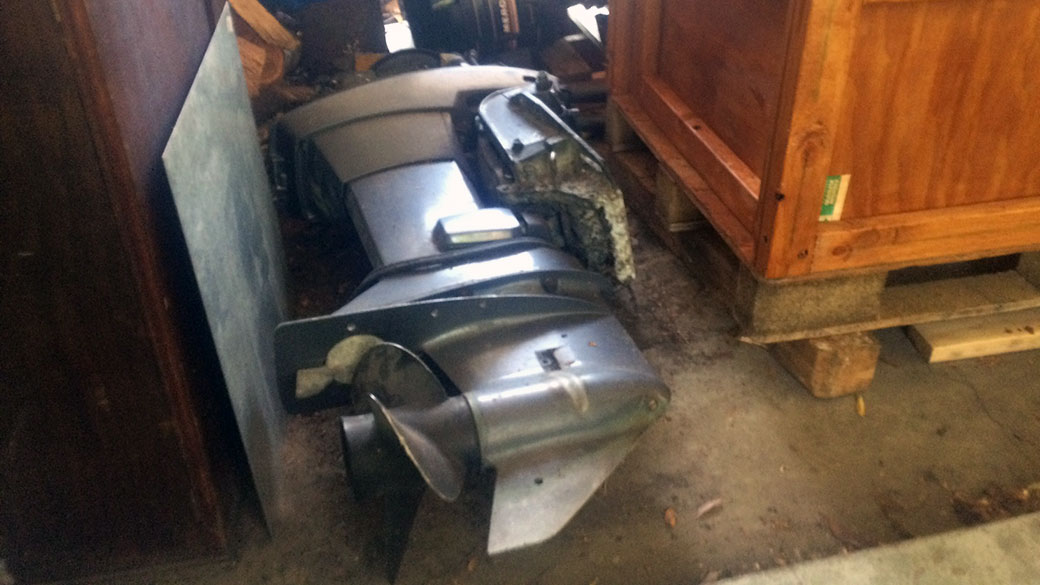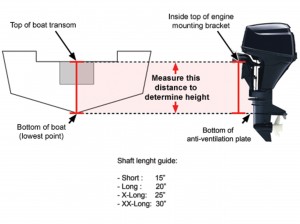Buying used outboards
- by Rares Badrea
-
in Blog
-
Hits: 11691

Is it worth it? Will it start? Does it have good compression? Will it push my boat? How much the maintenance costs? This are just a few questions you should ask yourself before deciding to buy a seconhand outboard. In the article below we will help you making the right decision.
SHORT GUIDE FOR CHOOSING AN USED OUTBOARD
There are plenty of articles on the internet telling you how to buy an used outboard. Here, at MMS, as usual, we will try to give you a guide on making the right choice based on what is available on the market. Buying a second hand outboard may seem an easy task but in fact choosing the right outboard for your boat (assuming you want to re-power and do not have the budget for a new one) is quite a complex task. Of course your boat will still float and any means of propulsion (oars included) will push it forward but, how efficient? We will discuss in this topic strictly about planing hulls on trailer boats ranging from 15 to 26 feet (4.5 to 8 meters) and I will try to (un)cover some trade secrets that you will not find anywhere else. Most of this "tricks" I have discovered myself as I could not find them explained anywhere including all my training as Evinrude, Yamaha and Mercury outboard tech. 2 STROKE or 4 STROKE? There are a lot of opinions out there about which one is the best but the truth is that the best one for you has to be suitable for your application.
Old conventional 2 strokes have the inconvenience of being noisy and smelly. The fuel consumption is another myth that is widely misunderstood. Fact: A 50 HP 2 stroke will have a higher fuel consumption than a 50 HP four stroke. True but it will also push your boat almost twice as hard because two strokes have every stroke of the pistons a power stroke in comparison to 4 strokes that fires every 2 complete rotations of the crankshaft. In plain English means that a 50 HP 2 stroke will do the job of a 70-80 HP four stroke because it is more efficient and much lighter. Now if you compare the fuel consumption you will get different figures! On the other hand 4 strokes are quieter and... honestly I can not come up with any more advantages! Serious! They are more complex (more things to go wrong), more expensive to service (oil, filter plus labor of changing them) and more expensive to purchase. I would be happy to have an argument about this with anyone that does not sell 4 stroke engines for a living! In the end, like anything else in life, is a mater of preference and choice. Personally I prefer Evinrude E-tec. I want to make it clear that I do not sell outboards for a living and I am not paid in any way by anyone to advertise their products. Is just that as a certified technician for many brands of marine engines (outboards, inboards and diesel), in my 20+ years of experience, I have not come across any technology that is suited better for marine applications. Must be because they invented it in the first place? ENGINE HP As a rule of the thumb, in order to have proper acceleration and speed at full load (tank full of petrol, all passengers and luggage as per building plate specs) you need to add a 0 after the length in feet. For instance a 20 feet boat will need at least 200 HP outboard in order to perform as it should. Now you will tell me that you have seen 20 foot boats powered by a 90 HP! That is true, a lot of boat builders (especially in Europe) rate their boats for very low engine power specs. The only reason is to make them more affordable to general public. Take that boat, put six people in it (each at 80 KG) plus luggage and a full tank of petrol and then try to put it on plane in fresh water downstream on a river! After moving EVERYTHING at the bow you will eventually go on plane but soon you will have to stop again as you almost reached your destination. And ignore your friend that wants to do some water sports as well, that just won't work at all! SHAFT LENGTH Once you have decided about HP you have to choose the right shaft length according to your boat transom height. Outboards come in 4 sizez: short (15"), long (20" sometimes refered as "standard"), x-long (25") and xx-long (30"). Below is a picture that will give you an idea about the correct size: 
Transom height engine shaft length measuring guide TRANSOM HEIGHT ADJUSTMENT This is the most critical aspect on rigging your outboard to transom as it could influence the performance of your boat by up to 35% (speed, fuel consumption and engine load). When the boat is planing, the water at the transom has a slightly upward trajectory and it should hit the anti-ventilation plate (very often term used wrongly as cavitation or cav plate) from underneath to create lift and keep your boat on plane. If the anti-ventilation plate is set to high, the propeller will draw air from the surface and ventilate, if it is to low the water will push your outboard down (water hits the anti-ventilation plate from above) creating drag and loosing performance. Now a little trivia about cavitation and ventilation since we need to make it clear for everyone: Ventilation Propeller ventilation is caused by air from the surface or exhaust gases being drawn into the rotating propeller blades. This results in the propeller slipping more than usual due to the reduced water load on the blades. The obvious symptoms of this are a sudden increase in engine RPM as well as a possible loss of speed. This commonly occurs when trying to turn the boat at high planning speeds or if the outboard or stern drive is trimmed out too high. Cavitation Propeller cavitation is less obvious than ventilation, but can be far more damaging. When the propeller blade passes through the water at an increasing speed, the pressure that holds the water to the sides of the blades is lowered. If the water is sufficiently warm, and depending on the speed of the boat, formation of water vapour (boiling) can occur. These bubbles that are produced then immediately collapse, releasing energy that can cause a cavitation burn on the propeller blades. This is one of the great advantages of stainless steel propellers. Due to their superior strength they can withstand cavitation damage better than aluminium and can also be produced with thinner blades to reduce the occurrence of cavitation. WHAT TO TEST/CHECK Now you find the right outboard for your boat based on HP and shaft length, you will need to assess if it is any good in terms of value (it means that with the money you spend to get it right plus your purchase price you will have paid a fair amount based on the market average) Just a compression test is not enough as it only rules out one possible problem that an used engine may have. You have to also make sure that: - Was serviced regularly at least once a year or 6 months in salt water use. - It starts, runs smooth and pumps water - ask when was last serviced and if the impeller was changed. - Has the right propeller for your application. You will find out once installed on your boat. Your engine must reach maximum RPM at WOT (wide open throttle) (usually between 5000-6000 RPM) with normal load. Check the specs given by manufacturer. If it is out of specs you need to increase or descrease propeller size accordingly. Any changes in propeller size to next available will change the RPM by approx 200-250 RPM. For instance if your engine is pulling only 5200 RPM instead of 5500 as in the specs you need to descrease to next available size. I will write a full article on propeller selection soon so keep an eye on www.mobilemarineservice.com.au. - The gearbox oil has no traces of water in it. Gearbox oil that is milky in color is a sign of water intrusion in the gearbox. Unscrew the bottom drain plug of the gearbox and let a few drops to come out for assessment. If it has stay away as you don't know how long that water has been sitting there. Very, very expensive to do a proper repair. - The charging system works - Measure with a multimeter, you should have at least 1 volt more reading on the battery with the engine running. E.g. measure battery voltage before start, let's say you read 12.7 volts. Start engine and measure again running at approx 1000 RPM. You should have at least 13.7 volts. Battery condition must also be taken into consideration as if in poor condition some batteries will not take charge even if the engine charging system is working properly. - It has all controls and gauges (the gauges on your boat may not work if is not the same model engine) - Very expensive to adapt - Trim and tilt works under load. If the outboard can not be tested in water under normal conditions you can put your weight on the gearbox and operate the trim. A good working one will lift 80 Kg with ease. If not then your boat will perform poorly (speed, engine load fuel consumption). Also very expensive to replace/repair - The inside of engine block is not clogged with salt build up. Some build up is acceptable in salt water but not too much. Inspect this by removing the thermostat cover. - Starts cold and hot as well. Some 2 stroke engines engines will have problems starting hot because the seals of the crankcase are worn. Very expensive to repair - FITS WITHIN YOUR BUDGET! That is all in a nutshell. I do hope you will make the right choice based on your preference and enjoy many happy days on the water with your family, friends or just alone! Happy Boating Rares Badrea Senior Marine Engineer
